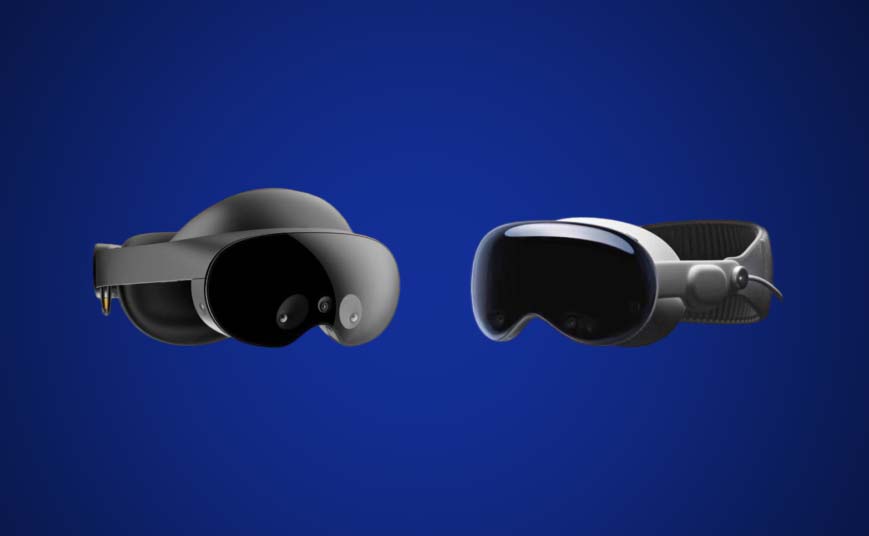In the forefront of the mixed reality revolution, the Apple Vision Pro and Meta Quest Pro are vying for supremacy, each offering unique features that promise to transform our digital interactions. Here’s a detailed look into what sets these devices apart, focusing on their advantages and limitations.
Apple Vision Pro
Pros:
- Unparalleled Resolution: The Apple Vision Pro shines with an impressive display, featuring 24 million pixels across two panels. This high resolution ensures that everything from text to textures is rendered with crystal clarity, elevating the visual experience to new heights.
- Advanced Control System: Apple’s headset introduces an intuitive control scheme that leverages eye tracking and gesture control. This system allows users to interact with their virtual environment in a natural and seamless manner, enhancing the overall user experience.
- Innovative Passthrough Capability: A key feature of the Vision Pro is its ability to provide a real-time view of the user’s surroundings through passthrough technology. This not only combats the feeling of isolation often associated with VR but also makes extended sessions more comfortable and safe.
Cons:
- High Price Point: With a price tag of $3,500, the Vision Pro is one of the more expensive options on the market. This makes it less accessible to the general public and positions it as a premium choice for enthusiasts and professionals.
- Fit and Comfort: Despite its advanced features, some users report challenges in achieving a perfect fit with the device, leading to potential light leakage in darker environments. This could detract from the immersive experience during use in low-light conditions.
Meta Quest Pro
Pros:
- Diverse VR Experiences: The Meta Quest Pro is celebrated for its extensive library of VR experiences. From gaming to social networking and productivity tools, it offers something for everyone, making it a versatile choice for both entertainment and work.
- Reliable Tracking and Interaction: Meta’s focus on effective hand-tracking and room-scale VR capabilities ensures a highly immersive and interactive experience. Users can navigate and interact with the virtual world with precision and ease.
Cons:
- Controller Dependency: Unlike the Vision Pro’s hands-free control methods, the Quest Pro still relies on physical controllers for many interactions. While effective, this could be seen as less intuitive or immersive for users seeking a more natural VR experience.
- Visual Fidelity and Performance: While the Quest Pro offers high-quality visuals, it may not reach the lofty standards set by the Vision Pro’s ultra-high resolution and processing power. Users demanding the utmost in visual fidelity might find the Quest Pro lacking in comparison.
So, both the Apple Vision Pro and Meta Quest Pro offer compelling entrances into the realm of mixed reality, each with its own set of strengths and weaknesses. The Vision Pro, with its focus on high-resolution displays and intuitive controls, caters to users looking for the premium MR experience, albeit at a higher cost. Meanwhile, the Quest Pro provides a broad and accessible gateway into VR, supported by a wide variety of content and reliable performance. Your choice between the two will likely hinge on what you value most in your mixed reality experience: the pinnacle of technological innovation or versatility and accessibility.


Leave A Comment